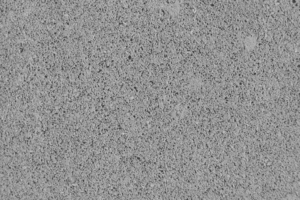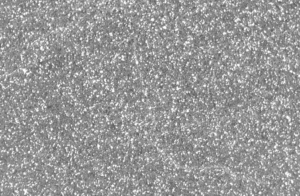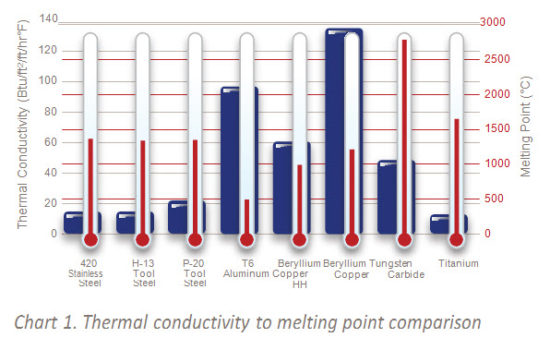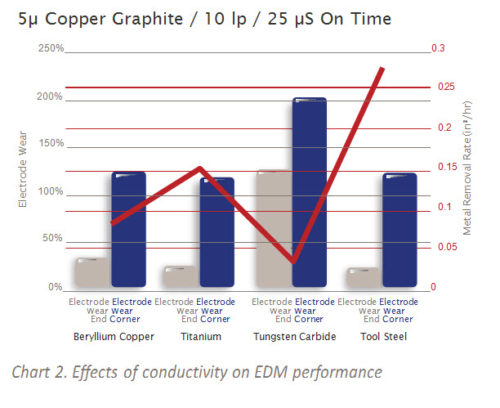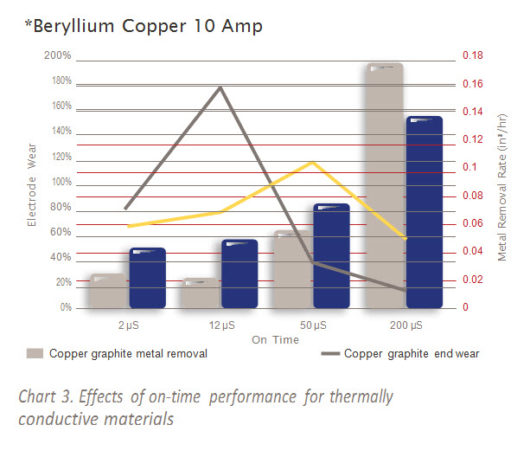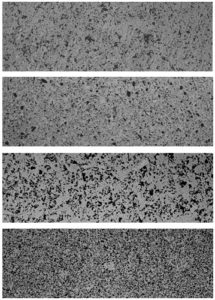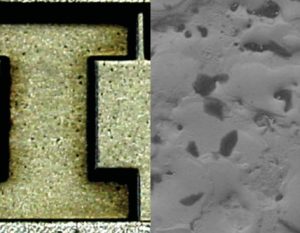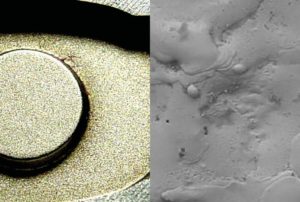From Entegris Poco Article by Jerry Mercer
INTRODUCTION
—
Dust, a common household word that can be defined as a finely powdered substance of various matters often suspended in the air. This is no different with the dust generated when machining EDM electrodes. Anyone that has machined graphite knows that the particles generated from the machining process are very fine and have a tendency to remain airborne. However, unlike common household dust, graphite dust has characteristics that must be taken into consideration. This article will discuss these characteristics and answer often asked questions in dealing with graphite dust.
HAZARD OR NUISANCE
—
Perhaps the most common concern when dealing with graphite dust is if it is considered a hazard to the human body. To answer this, we must first understand that there are two types of graphite– natural and synthetic. The graphite used to fabricate EDM electrodes, and thus produce machining dust is synthetic graphite and considered to be a biologically inert material that produces dust classified as a nuisance instead of a hazard. The most common isotope in graphite is carbon and since the human body itself is primarily carbon it is very compatible to the inert carbon material in synthetic graphite. Not recognizing this as a foreign substance, the human body will not attempt to reject it.1
While every measure should be taken to capture the dust at the source, this is virtually impossible and some amount will surely escape into the surrounding atmosphere. Due to the miniscule size of the dust particles, these may not be visible to the human eye. Graphite dust may be irritating to the eyes and could possibly cause stinging, watering, and redness. Contact with this dust may be abrasive and mildly annoying to the skin, but absorption is unlikely.2 There is always some form of health concern associated with any type of overexposure and a nuisance dust is no different. For this reason, exposure guidelines for graphite dust have been determined and identified in the Material Safety Data Sheet (SDS).
As identified by the American Conference of Governmental Industrial Hygienists (ACGIH), the exposure guideline for time-weighted average (TWA) for graphite dust over an eight hour period is 10 mg/m3 total.3 At this concentration, the graphite dust would be thick enough to hinder visibility. Having a concentration of this magnitude in a manufacturing environment is unlikely, especially if some type of dust collection system is in use.
Excessive exposure to graphite dust over extended periods of time can cause a chronic and more serious condition known as graphitosis, which is a form of pneumoconiosis. This condition arises when inhaled particles of graphite are retained in the lungs and bronchi. Hazards such as graphitosis have typically been associated with natural graphite, but have been associated with synthetic graphite in extremely rare instances.1 Natural graphite contains crystalline silica that precipitates graphitosis. This is not found in synthetic graphite or any dust produced by machining synthetic graphite. Long-term inhalation studies in rodents have not shown graphite dust to have serious health effects, however, air quality samples should be taken regularly to monitor the concentration of airborne graphite dust.
NOTE: Special considerations should be taken into account when dealing with graphite impregnated with other materials, such as copper or tungsten. Follow the health and safety guidelines for the material that has been impregnated into the graphite.
DUST COLLECTION
—
Aside from the need to capture machining dust to maintain a clean shop environment and protect employees, another critical need for dust collection is to prevent the graphite particles from entering into electrical housings, control panels, and switch boxes. By nature, synthetic graphite is electrically conductive and could create a myriad of problems if allowed to accumulate in areas that have a tendency to “short out” when in contact with foreign conductive materials.
There are primarily two methods for controlling graphite dust during the electrode fabrication process. The first method is to use high air velocity with a dust collector. High speed machining centers designed for machining graphite come already equipped with a dust collection system that evacuates the dust with a powerful vacuum. However, conventional machining centers such as mills, band saws, or grinders must be equipped with a type of secondary collection system. Portable units are ideal for shops that only do a limited amount of graphite machining since the unit can be moved from one machine to another as needed. Contrary to common belief, an “off the shelf” shop vacuum system is not adequate for graphite dust as the filtering system is generally not suited to collect the fine particles of graphite. To be efficient, a portable vacuum system must be equipped with a High-Efficiency Particulate Air (HEPA) filter that satisfies certain governmental standards of efficiency. For a filter to be qualified as a HEPA filter by government standards, it must be capable of removing 99.97% of all particulate matter in excess of 0.3 microns.
The best system for shops heavily engaged in graphite machining is a fixed unit with sufficient vacuum to draw the dust from the machine, through the duct work, and into a collection bin. The recommended speed for capturing dust at the machining center is a minimum air velocity of 500 feet per minute. Once the dust enters the duct work, there should be a minimum air velocity of 2000 feet per minute to prevent the dust from settling out of the air stream prior to entering the collection bin. The air velocity is determined by the amount of graphite dust in the air and relates to the rate of material removed at each machine. A recommended source of information for designing dust collection systems is “Industrial Ventilation: A Manual of Recommended Practice by the American Conference of Governmental Industrial Hygienists”.
The second method for dust control is to use a “wet” system to saturate the area around the cutter part with a liquid to prevent dust from entering into the surrounding atmosphere. The dust comes in contact with the fluid being used and is flushed away to a collection unit. While this can be an effective use of dust control, one must keep in mind the ability of the fluid to “wick” or be absorbed into the electrode material being machined. If this occurs, then the fluid must be removed prior to the electrode being placed in the EDM or it could contaminate the dielectric oil. In a wet-style dust collection system, a water-base solution should be used as this fluid does not wick into the graphite as easily as an oil-based solution.
Regardless of the type of solution used, the electrode material should be allowed to dry sufficiently prior to EDM. In order to expedite this process, the material could be placed in a convection oven for approximately one hour at a temperature slightly exceeding the vaporization point of the solution. In no case, should the oven temperature exceed 204°C (400°F) as this causes the material to oxidize and erode away. As an added note, compressed air should never be used to dry off an electrode as the air pressure only serves to force the fluid into the structure of the electrode.
EXPLOSIVE POTENTIAL OF GRAPHITE DUST
—
When we think of controlling dust in the workplace we often think of how to reduce or eliminate the potential of inhaling dust particles to prevent health issues. Unfortunately, the consequences of a fire or explosion caused by accumulated dust in the workplace can be far greater.
Dust explosions in manufacturing plants over the past decade have certainly gained media attention as these tragic events resulted in needless loss of life and property. The devastation of these events also caught the attention of the Occupational Safety and Health Administration (OSHA) who in 2008, issued OSHA Directive CPL 03-00-008 which states, “This directive contains policies and procedures for inspecting workplaces that create or handle combustible dusts. In some circumstances, these dusts may cause a deflagration, other fires, or an explosion.”4 As a result of this directive, facilities that generate dust through a number of processes, to include machining graphite should conduct an assessment of their practices to determine the potential of a dust explosion and develop practices to lessen the probability of this occurring. The primary objective of this assessment is to identify if dust particles are combustible and in concentrations sufficient to ignite.
Combustible dust is identified as, “Any finely divided solid material that is 420 microns or smaller in diameter (material passing a U.S. No. 40 Standard Sieve) and presents a fire or explosion hazard when dispersed and ignited in air.”5 The elements of fire include fuel, oxygen, and ignition. A dust fire or deflagration occurs when sufficient concentrations of fine particulates are suspended in air and then exposed to a source of ignition such as a spark or welding igniter. This ultimately results in dust ignition or combustion.
In regard to a dust explosion, two additional elements are added. These are dispersion and confinement. If the dust is dispersed in sufficient volume or a dust fire is in a confined area, then the potential of this developing into an explosion is significantly increased. Controlling any one of these elements will essentially eliminate the potential of a dust explosion. To overcome the potential of a graphite dust explosion, the industry has primarily relied on controlling the element of fuel by removing dust at the source through effective vacuum systems. However, this does not minimize the need to address each element and determine practices to mitigate its contribution to an explosion.
To increase its effectiveness in controlling the dust and reducing the fire or explosion potential, all dust control equipment involved in handling graphite dust should have explosion relief vents, an explosion suppression system, or an oxygen-deficient environment. Having adequate general ventilation is the first step and should be sufficient to also limit the employee exposure to airborne contaminants such as graphite dust particles.3
EXPLOSIBILITY TESTING
—
It is beyond the scope of this article to identify the full testing process in determining the explosive nature of graphite, however, we have conducted tests of graphite dust generated from onsite machining operations. The results of this testing [below] provide an indication of the limits for the graphite dust generated. However, due to variability in conditions, each shop will need to perform the explosibility testing for their specific conditions to have correct data to make a valid assessment of their activities.
The results of this testing indicate that the graphite dust used in these tests are hard to ignite even with low-moisture content and high-concentration levels where 98.5% of the particles are less than 500 micron in size. To reiterate, combustible dust is defined as a solid particle being 420 micron or smaller that can be ignited. In a shop environment, at the concentration levels of these tests, the graphite dust would most likely be thick enough to hinder visibility. Therefore, the bottom line is that the potential of experiencing a graphite fire or explosion is minimal as long as good ventilation and sufficient dust collection is present, and effective cleaning and maintenance programs are utilized.
In some cases, additional information can be provided by the manufacturer. One possible source for information on combustibility is the SDS for the material. Hazard statements should be contained in each SDS that identify if the material is a combustible product in its present form or a future transformed form. The SDS should also identify the exposure controls limits as well as the Hazardous Material Information System (HIMS) and National Fire Protection Agency (NFPA) rating. Contact your graphite supplier for a copy of the SDS for your specific material.
CONCLUSION
—
Dust is an ever present condition in a manufacturing environment generated by a myriad of processes that include production equipment, material handling, and machining. The creation of this dust does not inevitably lead to safety and health risks if accumulation levels are kept within limits through effective housekeeping and dust collection practices. However, when excessive amounts of dust are allowed to accumulate and then introduced to an ignition source, the results can be catastrophic.
Although our testing has shown that graphite dust is hard to ignite, this does not release us from our responsibility to continually improve how we deal with graphite dust. Recent times have seen the development of practices meant to improve the ability to identify an explosion risk. These practices often include safety monitoring equipment, improved dust collection systems, and the implementation of an effective safety program that offers good house- keeping practices and an efficient preventive maintenance program. While a dust fire or explosion cannot be completely eliminated, the use of these practices significantly reduces the possibility of this occurring. Being aware of the elements for a dust fire or explosion, knowing the explosive potential of the graphite dust and what resources are available for further information greatly improves the ability to identify potential risks and eliminate them before it is too late.
EXPLOSIBILITY POTENTIAL TEST RESULTS
—
|
TEST CONDITIONS
20-Liter Sphere |
Particle Size Distribution |
|
2-5 KJ Chemical Igniters |
4-100 J electric matches |
26.0% less than 45 micron |
| Rebound Nozzle Dust Dispersion System |
|
|
34.2% less than 75 Micron
70.1% less than 125 Micron |
| Pmax |
6.2 bar |
0.0 bar |
93.0% less than 250 micron |
| (dP/dt)max |
136 bar/s |
0 bar/s |
98.5% less than 500 micron |
| Kst |
37 m•bars/s |
0 m•bars/s |
| Duration of combustion |
52 ms |
0 ms |
| Moisture content tested |
2.40%
Overall rating:
Hard to ignite |
2.40%
Overall rating:
Hard to ignite |
| Weight % <75 micron |
34.70% |
34.70% |
| Bulk density |
43.7lb/ft^3 |
43.7lb/ft^3 |
References
1 Controlling Graphite Dust During the Machining Process; Moldmaking Technology, January 2000
2 Graphite electrodes used in electrical discharge machining generate a lot of dust, what to do with it? http://global-plas- tic-injection-molding.com/graphite-electrical-dis-
charge-machining.html
3 SDS: Poco Graphite Synthetic EDM Grade
4 OSHA Instruction, Directive Number: CPL 03-00-008, Combustible Dust National Emphasis Program (reissued), http://www.osha.gov/pls/oshaweb/owadisp. show_document?p_table=directives&p_id=3830
5 National Fire Protection Association (NFPA). NFPA 654. Standard for the Prevention of Fire and Dust Explosions from the Manufacturing, Processing, and Handling of Combustible Particulate Solids. 2006 Edition NFPA Inc. Quincy, Mass. 2006. http://www.nfpa.org
FOR MORE INFORMATION
Please call your local distributor to learn what our premium graphite solutions can do for you. Visit poco.entegris.com/ distributors for the location nearest you.

